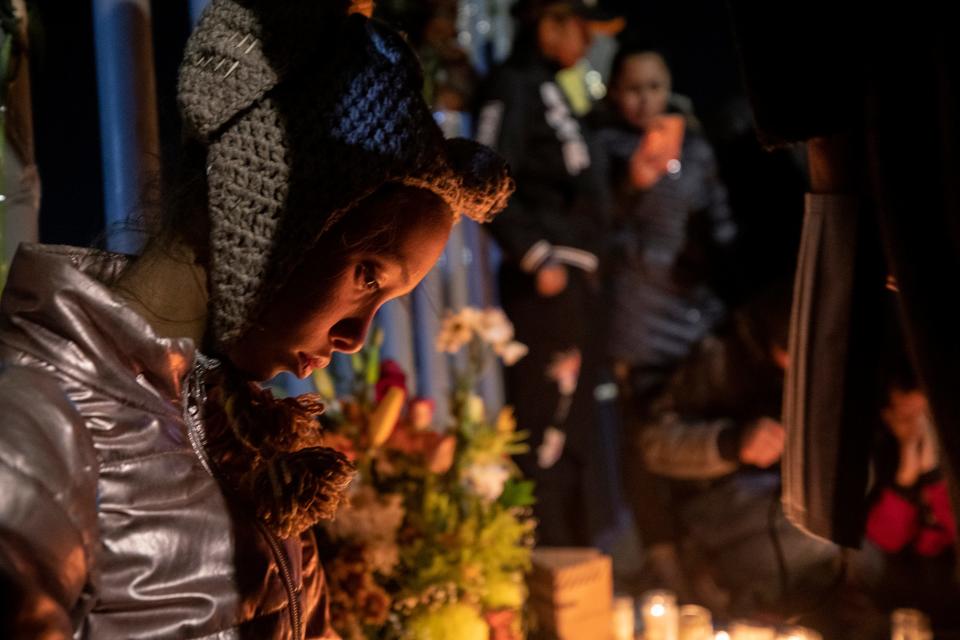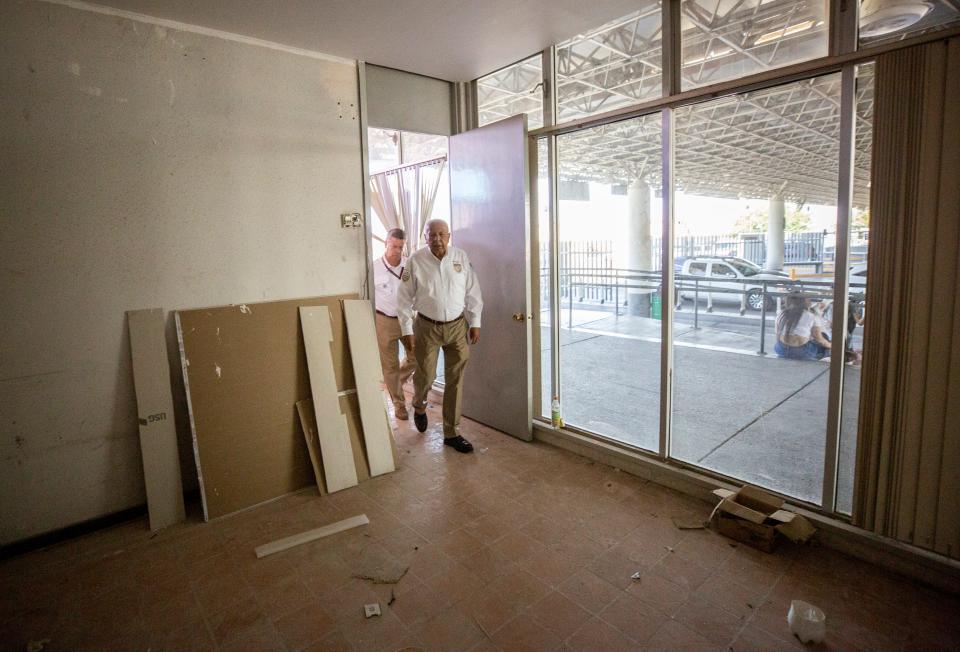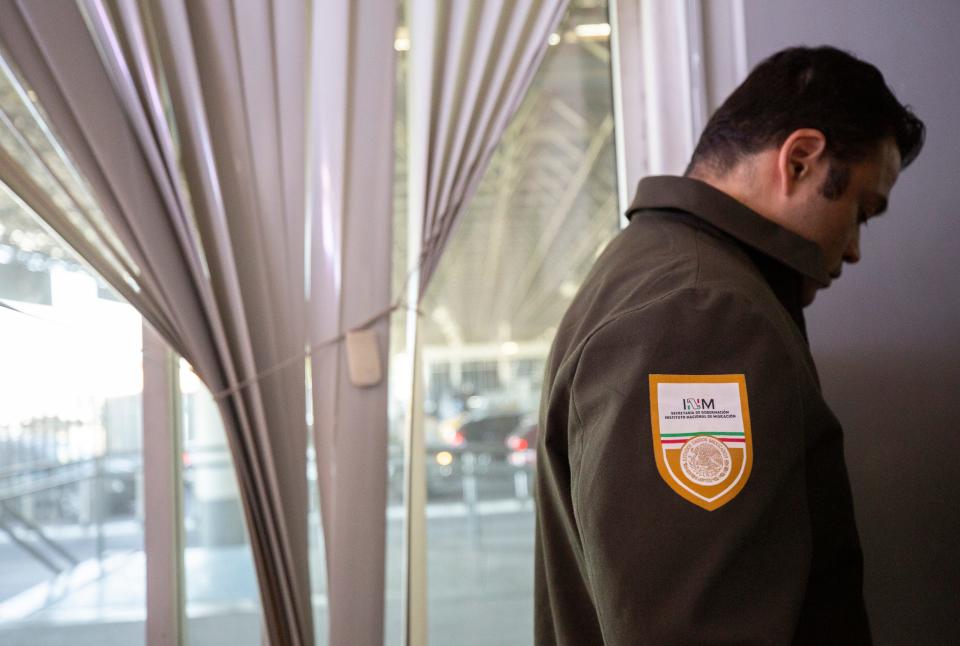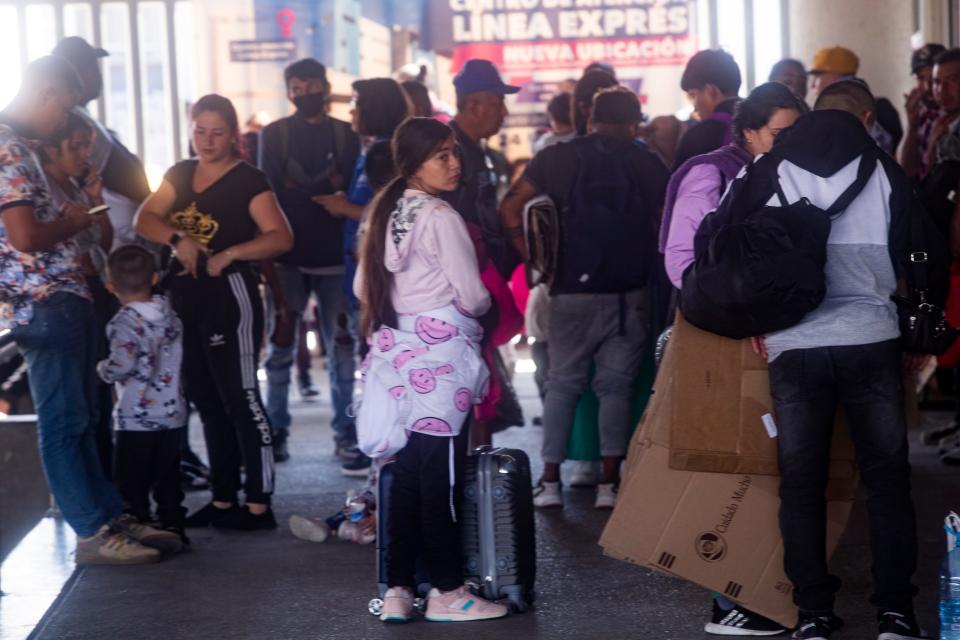Mexico shuts some migrant detention centers after Juárez fire, announces new 'shelter'
JUÁREZ, Mexico ― This country's top immigration official said Mexico is closing migrant detention centers in the wake of a deadly fire and plans to open humanitarian shelters instead.
Francisco Garduño faces criminal charges in Mexico that he failed to protect migrants in his custody after a March 27 fire killed 40 migrants from Guatemala, El Salvador, Venezuela and other countries. The National Immigration Institute commissioner has remained in his post as he awaits trial.
On Tuesday, Garduño gave reporters a tour of empty offices on the Mexican side of the Ysleta-Zaragoza international bridge that would soon be turned into an albergue provisional, "a temporary shelter," he said, "to replace the one where the accident occurred."
The "accident" was a horrific fire that spun out of control after migrant men — being held behind bars — allegedly lit foam mattresses to protest their detention. Prosecutors claim an immigration official or private security guard sold the men cigarettes and a lighter.

As black smoke bellowed the night of the fire, security camera footage appeared to capture officials and guards walking by the men's cell block door nonchalantly, without attempting to unlock the padlock or rescue the migrants.
Since the fire, inquiries have revealed that officials and guards could not find the keys to unlock the cells in time to free the men.

'All the conditions of security'
Garduño walked through a series of small offices looking over the bridge traffic. The remodeling was in the early stages: broken blinds hung over tinted floor-to-ceiling windows; piles of junk waited to be hauled away.
The new shelter will have space for 80 people, he said, "with all the conditions of security and civil protection." He didn't give a date for its opening.
"I have closed 33 installations, or provisional shelters, or migratory stations," he told reporters. "But we still have 17 more with capacity for nearly 5,000 people. So we aren't left without shelters. But the goal is that no one is held more than 36 hours, as the law requires."
More: Mexican president faces protest in Juárez over deadly fire at immigration center
Mexican officials have often used euphemisms to describe their immigration stations.
The federal government operates two migrant shelters — in the traditional context of the term — at its northern border, one in Tijuana and another in Juárez.

The Leona Vicario shelter in central Juárez is in an old maquila assembly plant and with a capacity to house 1,500 people. Although they are required to respect a curfew, migrants are allowed to leave the shelter for work or medical appointments.
But the station that President Andrés Manuel López Obrador called a "shelter" in the wake of the fire consisted of cells where migrant men and women were locked, in separate blocks, behind bars.
The new shelter won't keep migrants behind bars or locked in, Garduño said.
"We changed the model, immediately after the incident," he said.
Mexico "has always sheltered migrants, because (irregular) migration in Mexico is an administrative offense and we have to have a place to register them, to find out their nationality," he said.
Dig Deeper 'They couldn't find the keys': How 40 migrants died in Juárez fire
Number of migrants at border declines
Several dozen migrants picked up cardboard beds from the walkway outside the INM offices, as an entourage of immigration officials and reporters followed Garduño on his tour.
Some of the migrants said they had spent the night there; a Honduran mother said she hoped to be able to get an appointment through the CBP One app for her family.
"We heard that it worked better at the border," she said.

Last week, Department of Homeland Security officials said the number of appointments available via the cellphone app were up to 1,000 per day. The app has frequently been overwhelmed by demand, as migrants seek an appointment to make a claim for asylum or another other lawful immigration pathway.
The number of migrants crossing into the U.S. between ports of entry dropped dramatically in the days after border authorities stopped expelling migrants Thursday under the pandemic-era Title 42 rule.
Border authorities in El Paso reported 626 encounters Monday, according to the city's dashboard, after months of reporting over 1,000 migrant encounters nearly every day. The number of non-Mexican migrants returned to Mexico dropped, as well, Garduño said.
Garduño, who resides in Mexico City, is required to sign in at the federal tribunal in Juárez every other Tuesday while he awaits trial.
This article originally appeared on El Paso Times: After deadly Juárez fire, Mexico shuts some migrant detention centers

